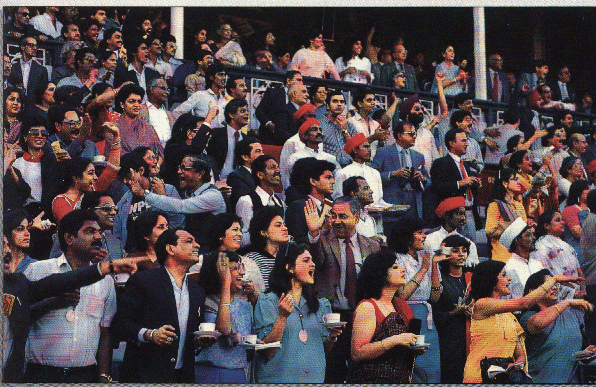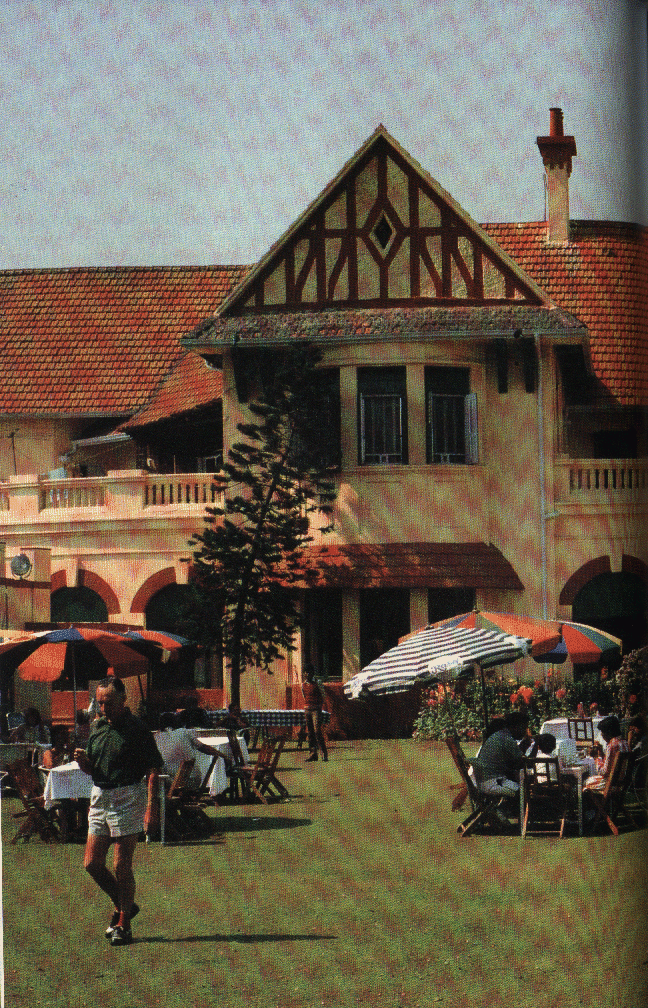Calcutta is home to some of the most prestigious clubs in this part of the world. In spite of Calcutta's dwindling economic activity and the seeming exodus of entrepreneurs and professionals, some of the best known celebrities wait for years to gain admittance to some of these hallowed halls, whose membership alone is supposed to certify the position and respect that one commands in society. These clubs once started as an imitation of the ones in Pall Mall, London, and are today equally respected. Many of these clubs provide temporary membership to tourists so exploring the club culture of Calcutta is not exactly impossible, as long as you remember that the etiquette here is still Victorian British and that you are required to abide the rules and maintain the decorum that in several ways may seem anachronistic.
Calcutta's oldest club is the Bengal Club on Russell Street, established in 1827. This was one of the strongholds of the segregationists and did not allow Indian members until 1962. This club slowly deteriorated and has been now replaced by Calcutta Club as the most sought after club in Calcutta. Its economic woes due to dwindling membership led to their selling of the main building facing Chowringhee Road, which has now been replaced by the ugly monstrosity of the Chatterjee International Center. Nevertheless, Bengal Club, now chiefly a lunch club whose member list runs like the Who's Who. The club's main attraction is the Reynolds Room, a complete collection of hard bound copies of the Calcutta Gazette and Punch, and a bar room adorned with a silver cobra that is also the mascot of the club.
The Calcutta Club on Lower Circular Road was founded in 1907 by a group of Indian elites like Lord Sinha, the first member of the House of Lords from India, the Maharajah of Burdwan, Sir R. N. Mukherjee and the Maharajah of Santosh and Eurpoean entrepreneurs who resented the Bengal Club's 'Whites Only' policy. The club has excellent grass and clay courts, a richly endowed library and the best pool rooms in the city. Calcutta's vociferous feminists seem to have been stopped at the gates of Calcutta Club by the liveried Gorkha gatekeeper for the men's-only Naughty Bar continues to be off-limits for women to this day. The club is frequented by all those who matter in India, mostly professionals. The club is famous for its smoked hilsa, a Calcutta dish that is arguably the best here.
The Royal Calcutta Turf Club on Russell Street runs the races at the Calcutta Race Course in the Maidan sine 1897, 99 years after the first races started in the city. Membership is exclusive although anyone can bet. The RCTC has a members' pavilion on the race courses on the lines of the one at Ascot where members are served a lunch of prawn cocktail and smoked beckti with their colonial punches.
The Saturday Club on Wood Street, founded in 1878, was originally a club frequented by 'would die to be' Bengal Club members, chiefly businessmen and lower ranking civil and military officers. Today it is far more respectable and traditional in its own way. The Saturday Club is best known for its Light Horse Bar. The Light Horse Bar is named after the members of the Calcutta Light Horse Regiment who frequented this bar during the World War II. The Calcutta Light Horse had been declared unfit for armed combat but they devised and carried out a raid on German ships docked in the Portuguese enclave of Goa.
Two new lunch clubs are the Chambers of the Bengal Chamber of Commerce on Park Street and Conclave on Lower Circular Road frequented mainly by the business community from the Burrabazar area.
The Tollygunge Club, founded in 1825 was the only country club in the city until recently. The clubhouse is actually a refurbished indigo plantation house from the 18th century, purchased first by Prince Ghulam Mohammed, son of the legendary Nawab Tipu Sultan of Mysore, and later sold to the club. The Tollygunge Club, or the Tolly as it is affectionately called offers probably the largest variety of activities amongst Calcutta clubs. These include riding, polo, tent-pegging, clay-shooting, tennis, squash, swimming and golf. Races and betting, a staple until the late 1970s was discontinued after the race course was curtailed by the subway project. The Tipu Sultan Bar is reputed to have the best pink gin in town. The Tolly is the venue of numerous tennis, equestrian, golf and sqaush events as well as the traditional Monsoon, Christmas and New Year's Eve balls. The main attraction on New Year's Eve is the night tent-pegging championship where riders pick up flaming tent-pegs with a pig stick.
The Royal Calcutta Golf Club on the Maidan, founded in 1829, runs the oldest golf course outside the British Isles. In addition to the 18-hole golf course, there are clay tennis courts and a bowling green from the 19th century. The club is famous for its barbecue lunch buffet on Saturdays during the winter.
Calcutta has a whole bunch of other prestigious clubs that are far too numerous to mention here. I would like to close the chapter with the fact that Calcutta has several international clubs like Rotary, Lions, Giants and the Jaycees. And for the egalitarian who would dismiss my discourse that clubs are part of the bourgeois counter-culture of the city, I would like to mention the innumerable neighborhood youth clubs that organize alley cricket and soccer, bridge and chess tournaments, carry out social service to a certain extent and to sum it up keep the neighborhoods lively, although they are not always tolerable in a civic way.

Bengal Club on Russell Street. This
house was the former residence of Lord Macaulay who drafted the Indian
Penal Code. Behind this building once stood the main structure of Bengal
Club, now replaced by a high-rise commercial building.

The New Year races at the Turf Club,
a social must.

Tollygunge Club. The former indigo
plantation house maintains its aura of the colonial age and is frequented
by the youthful Calcutta elite.

The lawns of the Royal Calcutta Golf Club with the clubhouse forming the backdrop.